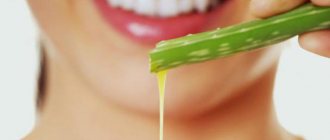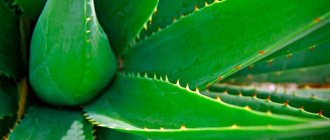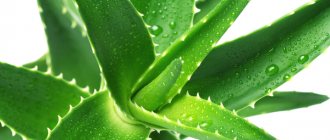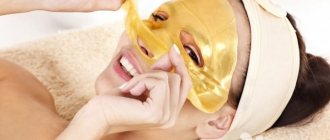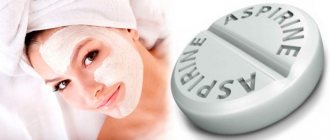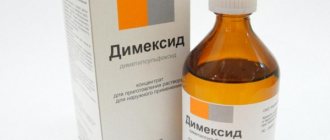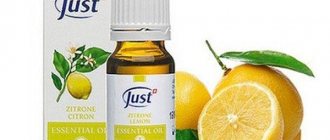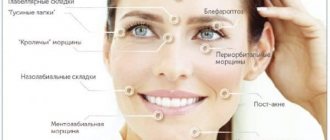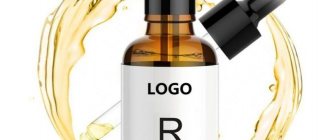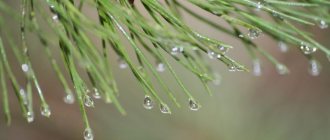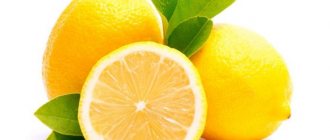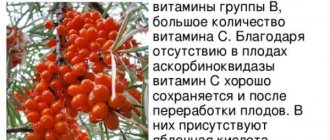Aloe is a herbaceous plant with dense, long leaves. We most often come across such varieties as agave or aloe vera. Both are used in folk cosmetology and both are easy to grow at home. They are unpretentious, can withstand the absence of moisture for a long time, and can reach up to three meters in height.
The plant is widely used in medicine for the treatment of ENT organs, gastrointestinal tract and various inflammatory diseases. The secret of the benefits of aloe lies in its unique composition.
Aloe effectively moisturizes dry skin, eliminates oily shine, helps cleanse the epidermis of acne and sebaceous plugs, treats inflammation and irritation. But the main value of aloe juice in cosmetology is its ability to rejuvenate the face.
Contraindications
In some cases, it is worth refusing to use a mask with aloe. This procedure is contraindicated:
- If you have an allergic reaction to components contained in the plant. Therefore, if the mask is used for the first time, it is necessary to use the juice of the plant and conduct an allergy test. This is very simple to do: you need to take a few drops of juice, apply to an open area of skin and wait 30 minutes. If there is no redness or irritation on the skin, you can safely proceed to the main procedure.
- During pregnancy. Aloe contains anthraquinone, a substance that promotes contraction of the muscles of the uterus, so a woman should refuse the procedure during this period.
- If the vascular network is located close to the facial skin (telangiectasis). In this case, systemic circulation of the component substances from the mask into the blood can occur.
- Aloe extract has a vasodilating effect, so it is not recommended to carry out the procedure during menstrual periods. This can cause heavy discharge, even bleeding.
- The mask will be ineffective if the facial hair is too thick, so such procedures will not help.
https://youtube.com/watch?v=dzTV8mc7Ax4
Moisturizing and rejuvenating
Moisturizing aging skin occupies a special place in cosmetology. Optimal moisture content in the skin allows you to maintain youth for a long time, maintain normal levels of natural elastin and lipid balance. To prepare the mask you will need:
- chicken egg (1 pc is enough);
- aloe juice or pulp;
- heavy cream.
All components are mixed into a homogeneous consistency, which is applied to the face. The mask is applied to the face for about 30 minutes. The skin must be pre-cleansed or steamed. After the procedure, you need to wash your face with clean water and moisturize with nourishing cream.
Optimal moisture content in the skin allows you to maintain youth for a long time, maintain normal levels of natural elastin and lipid balance
Important! When using fruits or berries, it is worth considering the characteristics of the body. If apples cause allergies, then you should not use them in a face mask. The fruit mask cannot be used if there are wounds, microcracks, or damage. The main condition before applying the mask is the mandatory cleansing of the facial skin.
For problem skin
Problematic dermis exposed to negative external influences requires gentle, gentle care, so it is important to select suitable accompanying components when making masks with fleshy succulents. You can select ready-made options
Aloe + cucumber
Problematic dermis prone to oiliness are well cared for by a product made from fresh, crisp, medium-sized cucumber, which is peeled and cut and placed in a blender bowl. A washed three-year-old leaf cut from aloe is also placed there. The raw material is turned into a pulp, which, after being placed on the skin, should be removed after half an hour.
With aloe juice
Eliminates inflammation, soothes irritation, and heals lesions with the fresh Facial Mask, made from succulent juice. After its use, wrinkles are smoothed out, color improves, and hydration is provided.
Night
Aloe Jelly Mask Bioaqua night mask provides effective, decent care. It moisturizes problematic skin, relieves peeling, eliminates redness, smoothes, and removes blackheads.
If aloe vera grows at home, it is worth creating the necessary conditions for this amazing plant, since its amazing qualities will help maintain the youth and beauty of your facial skin. As part of a variety of cosmetic masks, this succulent nourishes, moisturizes, smoothes, and brightens the skin, making it soft and fresh.
Where can I get juice?
Quick and easy - go to the pharmacy
It is not at all necessary to grow agave at home; you can purchase its juice at an affordable price at your nearest pharmacy. The medicinal value of the pharmacy version is identical to homemade preparations.
You can find 4 release forms:
- packs of ampoules of 1 ml;
- glass bottles of 50 and 100 g;
- liniment (liquid ointment);
- tablets - this is not suitable for us, because... they are intended for oral administration.
Ampoules are most often used to smooth the skin. They are convenient in terms of dosing, storage and time saving. “Industrial” aloe juice for wrinkles is usually produced in the form of an extract. You will need less of it - don’t forget to dilute it.
It’s fun and time-consuming to make your own juice
This is easy to do, but let us warn you right away that it will take time! You will need aloe to be at least three years old, since only an adult plant has the required concentration of substances with medicinal properties. Most of the pulp is contained in the wide leaves of the Barbadensis variety.
Step by step instructions for preparing aloe vera juice for skin:
- 7-14 days before pruning, stop watering the plant;
- cut off the lower wrinkled leaves of the plant near the trunk (they contain the most vitamin-rich liquid);
- Rinse cut leaves with water;
- dry the leaves on a towel until moisture completely disappears from the surface (this will take at least half an hour);
- wrap the leaves in foil or thick paper and place them in the refrigerator for 2-3 weeks - this is done to activate them (in an unfavorable environment, the production of biostimulants begins);
- remove the leaves from the refrigerator, cut off the skin, grind the gel they contain with a knife or blender and place in a glass container;
- dilute the resulting mass (3 parts water to 1 part juice);
- let it brew for 120 minutes;
- pass through gauze or a strainer - aloe juice for wrinkles is ready!
Watch video instructions:
Storage tips
Everything is clear with ampoules and vials - there are instructions in the package. But with juice prepared at home, you will need to adhere to the following rules:
- try to use the resulting liquid immediately;
- in the refrigerator at normal temperature, aloe is stored without loss of properties for no more than 2 weeks;
- cosmetologists recommend using dark glass containers - the absence of light has a beneficial effect on the composition;
- to increase shelf life in the refrigerator, you can dilute it with alcohol in a ratio of 4:1, but remember that alcohol has a tannic (drying) effect on the skin, which will somewhat conceal the effect of the product;
- ice molds are well suited for long-term storage - you can pour the juice into them and put them in the freezer, but keep in mind that the beneficial properties will decrease after defrosting;
- protect the mixture from bacteria: the consistency, color and smell should remain unchanged.
In what form to use aloe juice for the face against wrinkles is up to you. Some people prefer to cook with their own hands, while others prefer to buy a preparation and immediately begin the procedures. One thing is for sure - this natural doctor will become your reliable assistant in the fight against skin aging.
Homemade aloe face masks: 5 popular ideas
In the beauty industry, aloe leaf juice is used in the production of creams, lotions, and hair care products. But among supporters of natural cosmetics, it is face masks with aloe for wrinkles and other skin imperfections that enjoy a brilliant reputation. What means are we talking about? Next - TOP 5 popular recipes for aloe masks.
Video on the topic
Mask for all skin types made from aloe, milk and yolk
Honey with olive oil
Summary. This anti-wrinkle aloe face mask noticeably smoothes facial and age-related furrows, has a positive effect on aging skin, activates metabolic processes, and improves blood circulation. Olive oil rejuvenates the epidermis, making it firm and elastic.
What you will need
- Half a tablespoon of 100% natural olive oil.
- Half a tablespoon of fresh aloe leaf juice.
- Fresh chicken egg.
- A large spoon of melted honey.
Step by step
- Beat the egg with a whisk or fork.
- Pour olive oil and prepared aloe juice into the egg mixture.
- Pour melted honey in there. Mix all ingredients well with a spoon.
- Apply the mixture to all areas of your face. Try to relax and wait 20 minutes.
- Wash your face with clean water or use a special lotion.
- You can use daily cream.
Video on the topic
Aloe and honey cleansing face mask
Nutritious curd and honey
Summary. Cottage cheese increases moisture content, nourishes the skin, and improves metabolism. A face mask with aloe in combination with honey and fermented milk has a powerful healing effect, treats inflammation and effectively fights acne and pimples.
What you will need
- The pulp of a leaf from a “hundred-year-old tree.”
- A small spoon of natural honey.
- A small spoon of low-fat grainy cottage cheese.
Step by step
- Mix everything and bring the product to a paste.
- Apply a thick layer. You need to keep it on the skin for at least 20 minutes.
- Wash your face with clean water.
- Apply some daily cream.
With lemon for acne and oiliness
Summary. The product fights acne and pimples, eliminates inflammation, and soothes irritated epidermis. Lemon brightens and evens out the tone.
What you will need
- Aloe leaf gel.
- One teaspoon of freshly squeezed lemon juice.
Step by step
- Place the gel in a clean bowl and add citrus juice.
- Mix the ingredients well.
- Apply the prepared liquid mass thinly onto a clean face. The mask should act for 15-20 minutes.
- Wash your face with water at room temperature and use a nourishing cream.
Video on the topic
Aloe and clay care product for problem skin
Soothing with clay
Summary. In addition to the disinfectant and anti-inflammatory effect, the mixture saturates with beneficial elements that are found in abundance in blue clay. This natural preparation dries out sebaceous skin and normalizes sebum production.
What you will need
- Blue clay dessert spoon.
- Dessert spoon of aloe vera juice.
Step by step
- Mix everything to the consistency of a thick paste.
- Apply the mask with a special brush. Try to relax your facial muscles to evenly distribute the clay slurry.
- After no longer than 20-30 minutes, you can wash your face with clean water and apply your daily cream.
Moisturizing with peach oil
Summary. The product relieves skin from dryness and flaking, relieves inflammation and irritation. The cream deeply nourishes, and the peach oil saturates with fatty acids. In addition, the oil has a slight brightening effect, improves complexion, and increases vascular tone.
What you will need
- A tablespoon of agave gel.
- Half a small spoon of peach oil.
- A teaspoon of heavy cream.
Step by step
- Mix everything into one “puree”.
- Apply to clean skin with a soft brush and leave on for at least 20 minutes.
- Rinse off with clean water and apply daily cream.
The effectiveness of using aloe juice for the face against wrinkles and other defects is confirmed by many positive reviews. Girls say that a face mask with aloe gives quick results: changes are noticeable after the first use. But to enhance the effectiveness of the product, it is better to combine aloe masks with proper nutrition and a healthy lifestyle. Then your skin will shine with beauty to your delight and the envy of others.
Benefits and indications
Aloe juice for the face
Aloe has antimicrobial, anti-inflammatory, analgesic, laxative, restorative, antibiotic, anti-ulcer, cleansing, healing, moisturizing and many other beneficial properties.
Directly for the face:
- brighten, refresh the complexion and get rid of pigmentation and freckles;
- eliminate pimples, blackheads and other rashes;
- tighten pores;
- heal wounds, microcracks and even cuts;
- cleanse, nourish, moisturize and tone the skin;
- remove oily shine and restore the secretion of the sebaceous glands;
- relieve peeling and redness;
- saturate with oxygen;
The most invaluable benefit is its anti-aging effect. Juice and pulp not only prevent aging, but can also smooth out even deep wrinkles.
Aloe is not an allergenic plant, and it also helps eliminate the consequences of allergic reactions.
No wrinkles around the eyes!
Aloe is a real salvation for the area around beautiful women's eyes. There are a huge number of masks using the juice of this plant. We have selected only a few.
Moisturizing and rejuvenation
The recipe below will be especially useful for dry skin. This moisturizing mask is recommended for use during the cold season. The product helps in moisturizing and also fights wrinkles and dark circles under the eyes.
You will need to perform the following steps:
- Mix agave juice (two spoons) with the same volume of milk. Add either an yolk or a spoonful of heavy cream to the mixture.
- Mix the product thoroughly and apply to the area around the eyes.
Leave for 15 minutes. Rinse off carefully with running water.
Against wrinkles and aging
The flower will be useful for signs of wilting, as well as when the first wrinkles appear. Here you will need:
- cottage cheese (small spoon);
- Agave juice (two small spoons);
- honey (small spoon).
The mask should become uniform in consistency. Apply the composition for 25 minutes. After the time has passed, the skin must be carefully cleaned and your cream applied.
Anti-wrinkle lotion with chamomile
Effect: cleanses the face and tightens pores, which promotes rejuvenation and improves skin tone.
What do we have to do:
- prepare the chamomile decoction, wait until it cools a little;
- add agave juice to it;
- heat the liquid in a water bath;
- add eucalyptus essential oil and tocopherol (a few drops);
- Shelf life in the refrigerator is up to 1 week.
Aloe based mask recipes
Aloe is ideal for combating wrinkles and other age-related skin changes. And to maintain your beauty, it is enough to regularly make masks according to the recipes we recommend.
Recipe 1. With honey and cream
This mask saves the skin from sagging and perfectly tones.
- Take 2 tbsp. spoons of fresh aloe juice;
- 50g medium fat cottage cheese;
- 20g natural honey;
- 10 ml fresh cream.
Interesting! How to use olive oil on your face
Melt the honey to a liquid consistency and mix it with the rest of the ingredients. Apply the mixture to your face, avoiding the eye area, for 25 minutes. Then rinse everything off with cool water.
Recipe 2. With starch and egg white
In addition to the fact that this mask has an excellent lifting effect, it smooths out wrinkles, brightens and tones the dermis.
- Take 10g aloe juice;
- chicken egg white;
- 3-4 drops of tea tree essential oil;
- 10g fresh cucumber juice;
- 10g potato or corn starch.
Mix aloe and cucumber juices and soak starch in them. While it swells, beat the egg whites. Then combine the ingredients and add oil at the end. Apply the mask to a clean face in an even layer. Wait 30 minutes for the mixture to dry.
Recipe 3. With cosmetic clay
And this composition will help get rid of wrinkles. For oily skin, take black clay, for combination skin, blue or green, for dry skin, pink clay. And white clay is considered universal, suitable for all types.
- You will need: 20g clay;
- 20ml aloe juice.
Mix both ingredients until you get a consistency like sour cream. Next, apply it to your face for 20 minutes. Rinse off with warm water.
Recipe 4. With milk
Another anti-wrinkle mask, only around the eyes. It perfectly gets rid of crow's feet, bruises under the lower eyelid, and swelling.
- Take 20g of agave juice;
- 20g milk;
- 5g cream.
Mix the liquids together, then soak the sponges in it and place them on your eyes, first taking a horizontal position. Keep for 20-30 minutes 2-3 times a day.
Recipe 5. With peach oil and St. John's wort
This mixture has an excellent rejuvenating effect on dry skin. To prepare you will need:
- 30g aloe juice;
- 2-3 large strawberries;
- one teaspoon of fresh or dried St. John's wort;
- cosmetic peach oil 4-5 drops.
Place all components of the mask in a bowl and mix with a blender until smooth. If you don’t have a device, then simply crush the grass in a mortar and mash the strawberries with a fork, but then the mixture will not turn out so airy. Apply everything on your face for 20-25 minutes, then rinse with warm water.
Recipe 6. With spirulina
This face mask has an excellent anti-aging effect. Suitable for all skin types.
- Take 10g spirulina;
- 10-12 ml boiled water;
- a tablespoon of aloe juice;
- vitamin E capsule.
Pour water over the seaweed and wait until it sits for 15 minutes. Then add the rest of the ingredients to it. Apply to face, including the eye area, for 30 minutes.
Recipe 7. With glycerin and oatmeal
The mask nourishes, moisturizes, smoothes out shallow wrinkles, and protects against the negative effects of external factors.
- 10g agave juice;
- 10g of clean water;
- 10g pharmaceutical glycerin;
- 5g honey;
- 10g oat flour as a thickener.
Interesting! Benefits of coconut oil for the face
Combine flour and water to obtain a thick mass. Add the remaining ingredients and apply to a clean face. Wash off after 20 minutes.
Recipe 8. With chicken yolk
And this anti-aging mask is especially good for skin after 35 years.
- Take aloe pulp - 10g;
- chicken egg yolk;
- 20g milk.
Mix in the yolk and milk and beat a little. Then add the agave pulp there, and mix again with clean hands until a homogeneous consistency is obtained. Dip a cotton pad in the resulting liquid mass and wipe your face well with it. Wait 25 minutes, then rinse with cool water.
Loading …
Also, for the purpose of prevention and for additional care of the dermis, it is recommended to lubricate the face, neck and décolleté area daily with ice cubes with a decoction of herbs and aloe juice.
Aloe face masks prepared at home are a real salvation from wrinkles, sagging skin and other age-related changes. Use them regularly, and the results will not take long to arrive.
Stylists have many techniques that always work flawlessly. One such trick is to pair beige color with rose or yellow gold jewelry. This combo will look as expensive and aristocratic as possible if the clothes are presented in a matte texture.
Review
Vashilova Marina Andreevna
I can’t help but share with you my favorite recipes. I stopped buying tonic in the store when I was pregnant with my first child. Since then, the skin on my face has remained at 25. I pour boiling water over the dried herbs, which by the way I collect and dry myself. I leave for about 12 hours and strain. To the decoction I add aloe, which also grows at home, a bottle of calendula tincture, any liquid vitamins that are currently on hand and 10-15 drops of any essential oil. I wipe my face at any convenient time. Since I get different amounts, I take it with me on a walk with the children and use it instead of a disinfectant and cleanser, replacing the same wet wipes. Another recipe from aloe, which does not apply to facial products, but at one time my grandmother “groomed” my sister. She had extremely low hemoglobin and a very weak immune system. As a result, associated sores. 100 grams of honey, 1 glass of aloe and 1 lemon. Take 1 tsp. in the morning and before bed. Be beautiful, young and healthy.
Efficiency
Aloe effectively helps women get rid of the first age-related changes and look much younger. Smoothes wrinkles (facial and senile), provides lift to all kinds of sagging, makes the skin firm and elastic.
One way or another, it is the chemical composition of the agave that determines its anti-age effect:
- aloin is a substance that is found exclusively in the leaves: it has protective functions, including preventing age-related changes;
- pectin moisturizes mature skin, which is constantly lacking moisture;
- carotenoids are often used in cosmetics to combat age-related wrinkles;
- organic acids have regenerating and rejuvenating properties;
- tannins smooth out small facial wrinkles;
- vitamins (here retinol, tocopherol, and ascorbic acid) promote the synthesis of collagen and elastin fibers, which are responsible for the elastic epidermis;
- trace elements and mineral salts control the water-salt balance - it is very important for mature, wrinkled skin.
Aloe leaves contain more than 20 amino acids, 8 vitamins, 10 microelements - and all of them help improve metabolism at the cellular level and help mature skin regenerate. That is why this plant is so effective in combating almost any age-related changes.
Application of Azelik® gel in the treatment of acne
Along with using cosmetics at home, you must use medications prescribed by a dermatologist. Acne requires medical treatment. For mild to moderate acne, a dermatologist may prescribe azelaic acid, for example, Azelik®5,9 gel. The base of the drug contains an additional component – emollient squalane, which softens and moisturizes the skin1.
Azelik® gel is sold in pharmacies in tubes of 5, 15, 30 g. The drug must be applied to clean, dry skin.
*acne
Composition and properties of aloe
The Aloe genus includes four hundred species of succulent plants, perfectly adapted to the arid conditions of their natural habitats. In Russian apartments, we most often encounter two types of this plant: aloe vera (or “agave”) and aloe vera.
It is easy to distinguish them: agave has an elongated stem, on the sides of which there are narrow leaves; Aloe vera leaves have a wide base and form a lush rosette. Aloe vera leaves have more healing effects on the skin.
The biochemical composition of aloe contains over two hundred useful substances. The pulp and juice of fleshy aloe leaves contains large amounts of:
- Flavonoids.
- Polysaccharides.
- Phenolic compounds.
- Smol.
- Gorechey.
- Hormone-like substances.
- Macro- and microelements.
- Carotenes.
- A combination that is unique in its completeness, consisting of twenty amino acids (eight of which are classified as essential), which are excellent building materials for the human body, determines the high regenerative properties of this plant. Aloe promotes skin cell renewal, collagen synthesis, accelerated healing of open wounds and skin microdamages. Due to its anti-inflammatory effect, aloe is often used to combat acne, skin diseases and irritations. By preventing skin aging, aloe prevents the formation of wrinkles.
- The high content of antioxidants, represented primarily by vitamins A, C and E, neutralizes the effects of free radicals, prolongs the youth of the skin, and also protects it from the effects of harmful natural factors.
Indications and contraindications
The uniqueness of aloe masks lies in their versatility and the ability to be used for any type of skin, unlike masks made from flax seeds.
They are indicated for:
- Nourishes and actively moisturizes dry, dehydrated skin.
- Degreasing and drying oily skin.
- Toning and deep cleansing of normal and mixed skin types.
- Solutions to the problems of inflamed and sensitive skin.
- Tightening sagging aging skin, smoothing its relief, reducing the depth of wrinkles.
How to properly prepare raw materials for a mask
The most effective masks are those made on the basis of biostimulated aloe juice.
- Only a mature (at least three years old) plant is suitable for its preparation. Before preparing aloe juice, stop watering (the lack of moisture coming from outside will contribute to an increased concentration of nutrients in the pulp of the leaves). The duration of an artificially created drought is at least two weeks.
- From the plant prepared in this way, cut off the lowest leaves (as a rule, already having yellowish tips) and thoroughly wash them with plenty of boiled water.
- After blotting the leaves with a cloth, wrap them in thick paper and place them on the bottom shelf of the refrigerator (not freezer) for two weeks.
Watch the video recipe for properly preparing the plant and preparing juice from it
We look at the root, or rather at the leaves
Do not rush to glance at a possible test subject standing on the windowsill. You should first make sure that your option is suitable. The fact is that there are several types of plants. Two of them have the greatest range of healing qualities: tree aloe, which is also called agave, and aloe vera (Latin name - Aloe barbadensis).
For outdoor use at home, the first – tree-like option – is best suited. And if you have just such a copy on your window, please accept our congratulations!
Anti-age medicine is the plant juice hidden in the leaves: it is an indispensable natural remedy for aging and dry skin, which effectively affects wrinkles and other signs of aging. In addition to cosmetology, the juice is also used in medicine against eczema, pyoderma, psoriasis and the treatment of other skin diseases.
It contains a whole arsenal of substances: natural minerals, vitamins A, groups B, C and E, folic and acetylsalicylic acids, bioflavonoids, enzymes, allantoin and pectins.
Let's take a closer look at the medicinal properties and understand exactly how aloe helps against wrinkles around the eyes, bags and bruises:
| Effect | Impact |
| Smoothing and firmness | By promoting the production of collagen and elastin, aloe cosmetics rejuvenate, maintain skin elasticity, delay the appearance of new wrinkles and make existing ones less pronounced. |
| Moisturizing and regeneration | The juice of the plant helps deliver beneficial components to the deeper layers of the dermis, which leads to the restoration of hydrolipid balance and healing through faster renewal of damaged tissues. |
| Free Radical Protection | The natural UV filters contained in the plant help protect the dermis from the aging effects of free radicals that the sun's rays bombard us with. |
| Cleansing | Agave will become indispensable for women with problem skin: the juice eliminates excess oil, cleanses the face, and visually smoothes enlarged pores. |
| Antiseptic | The antibacterial and anti-inflammatory properties of aloe have long been proven. It perfectly relieves allergic reactions, redness, disinfects the epithelium, and copes with burns. |
Aloe juice and gel – extracted correctly
For home procedures, it is the juice or gel of this plant that is used. They can be stored for no more than 3 days and only in the refrigerator - otherwise aloe will lose its healing properties.
To extract the gel, you need to cut off the aloe leaves and let the resin drain for a few minutes (place the leaves vertically). Using a vegetable peeler, cut off the thin top layer from the leaf - carefully and on both sides. You will be left with a boat filled with gel - you can simply collect it with a spoon.
Preparing juice from this plant is also very simple. Aloe leaves should be wrapped in foil and placed in the refrigerator for at least a day. Then grind them with a knife or blender. These small pieces need to be slightly kneaded with your hands so that the juice begins to stand out and put them in a dark place for 1 hour. Then squeeze out the juice using gauze.
Fast and easy
Rubbing with a leaf or applying juice - which is better?
Due to lack of time, especially in the morning, many people prefer to wipe their face with aloe leaf as a tonic before applying day cream and cosmetics.
It is generally accepted that the best results can be expected from freshly prepared aloe juice and can be used both in pure form and by adding it to masks, cleansers and lotions (read about preparing juice and medicines from aloe here).
The healing properties of juice obtained from aloe
There are about 150 elements in the gel-like mass contained in the leaves of the agave. The most valuable components for facial tissues are:
- pectin, which has a pronounced moisturizing property;
- catechins, which help improve the condition of blood vessels;
- carotenoids that even out the complexion and reduce flaking;
- aloin, which protects the surface of the face from ultraviolet radiation;
- organic acids, including succinic, cinnamic, citric, which enhance tissue regeneration and promote rejuvenation;
- tannins that have bactericidal and anti-inflammatory effects;
- microelements that regulate metabolic processes in tissues and improve blood circulation;
- vitamins A, C, E, as well as group B, which effectively nourish skin cells and increase the supply of oxygen to them;
- amino acids that increase collagen production to maintain tissue elasticity;
- mineral salts that maintain water-salt balance and regulate the functioning of the sebaceous glands.
The aloe leaf contains a large amount of liquid: juice or gel obtained from the plant is used for cosmetic purposes
Thus, under the influence of healing juice, the condition of the surface of the face improves significantly:
- fine wrinkles are smoothed out;
- eliminates oily shine;
- the number of pimples decreases;
- skin tone brightens;
- manifestations of skin itching and irritation are reduced;
- pores narrow;
- There is a deep cleansing of facial areas.
It is important to use aloe to treat facial skin regularly and during the course - only in this case a stable effect is ensured. This product can replace your regular cream and will get rid of inflammation on the skin: just wipe the face area with a cotton pad soaked in squeezed juice
For very dry skin, it is better to use the product as part of a mask. Cooled aloe gel, used separately, has a pronounced refreshing and tonic effect.
If aloe leaves are placed in the refrigerator for several weeks, the resulting gel will become more effective and healing than freshly squeezed juice from the plant
However, most often the juice or gel obtained from aloe is used as part of various face masks. Despite all the advantages, such compositions have some disadvantages, knowledge of which will help you decide whether their use is suitable for you. In general, the pros and cons of using mixtures with the addition of a medicinal plant are presented in the table below.
Table: advantages and disadvantages of masks with aloe juice
Advantages Disadvantages include exclusively natural ingredients; specially selected ingredients enhance the effect of aloe juice; do not require a lot of time for preparation; all components are available; variety of compositions for different skin types; minimum contraindications; Suitable for solving various facial skin problems.
Use with caution on very dry surfaces of the face; used only in courses observing the frequency and duration of application; prepared mixtures must be used immediately; aloe juice is not suitable for everyone: the product can cause an allergic reaction; incorrect use of mixtures can lead to unpleasant consequences.
Precautionary measures
When used externally for cosmetic purposes, the medicinal plant does not have any specific contraindications. There is only one caveat: you will need to make sure that you do not have an individual intolerance to aloe or aspirin.
In general, an allergic reaction to aloe vera is very rare. But God protects those who are careful, so check the reaction first - use a small drop of pure juice on an inconspicuous area of skin. Rinse it off immediately if itching or redness occurs. If you do not feel any discomfort within 30 minutes, you can use it.
While waiting for the effect of the mask, those with sensitive skin may feel a tingling or slight burning sensation. You should immediately wash off the product from your face, treat it with cream and next time reduce the waiting time for the effect of the mask.
By the way, if you are also thinking about taking aloe internally, then there are already a number of contraindications, do not forget to read them!
Does it help?
With age, many processes in the human body slow down. The production of hyaluronic acid, which is responsible for skin hydration, decreases, and the production of elastin and collagen is disrupted. Experts note that aloe juice does an excellent job of accelerating cell regeneration. Due to its texture, it penetrates deep into the layers of the skin and has a moisturizing effect.
What beneficial components of the plant contribute to this?
- The allantoin component helps stop the process of premature aging.
- Amino acids and vitamins of groups A, B, C, E nourish the skin and become natural antioxidants.
- Salicylic acid is an antimicrobial agent that heals wounds, cracks, and fights acne.
- Among other things, aloe contains a huge amount of minerals and trace elements responsible for restoring the resources of the human body.
- The water balance in the tissues is regulated, the appearance of new folds and unevenness of the skin is prevented.
- Aloe protects against ultraviolet exposure and subsequent photoaging.
- Old pigment spots are lightened and the appearance of new ones is prevented.
Use in beauty salons
Professionals also actively use aloe, purchasing agave leaves or juice in ampoules for cosmetic purposes. It is not profitable for salons to grow the plant themselves, since this will require large areas and appropriate personnel.
Some salons give preference to expensive cosmetics. The branded masks, creams and gels that they will offer you are just a means of earning money. Of course, they have the same therapeutic effect, but let's return to our original thought: why overpay?
Once you are convinced of the effectiveness of using aloe juice for wrinkles under the eyes, crow’s feet, bags and for facial skin rejuvenation, remember the precautions. First try all suggested mixtures on an inconspicuous area of skin to make sure there is no individual allergy to any of the ingredients.
Take care of your face and stay young for many years with aloe! Don’t forget to tell us in the comments about your experience of using it – it will be interesting to all readers.
Chemical composition
Aloe impresses with its rich chemical composition . The plant contains more than 70 nutrients, more than 200 active enzymes, 20 minerals and 18 amino acids. Among this variety:
- vitamins A, C, E, B 1, B2, B6, B12;
- minerals: potassium, calcium, copper, magnesium, manganese, phosphorus, selenium;
- esters and essential oils;
- succinic, cinnamic salicylic and folic acids;
- tannins and resins;
- allantoin.
Allantoin has an astringent, anti-inflammatory and analgesic effect. In addition, allantoin serves as a means of delivering other beneficial substances deep under the skin, which makes agave so indispensable in cosmetics.
The use of aloe in medicines and cosmetics
Currently, aloe vera juice is actively used in medicine and cosmetology.
Exist:
- liquid extracts (intramuscular injections);
- drinking juices based on it, for example, fresh juice or evaporated juice - sabur, it is recommended for those who have problems with the gastrointestinal tract;
- syrups;
- oils - recommended for use to protect against various infections, to reduce inflammation, to treat burns and cuts;
- creams;
- gels;
- ointments;
- masks for face, body and head;
- applications;
- bandages;
- shampoos and conditioners;
- shower gels;
- massage mixtures.
The product content in such products varies: from 20 to 80%. Moreover, the more product, the higher the cost of the drug or cosmetic product.
Interestingly, liquid aloe extract is often used at home. For example, for preparing hair and face masks.
The liquid extract goes well with any natural ingredients, as well as with already used cosmetics: masks, creams, shampoos and balms.
Also, aloe juice from ampoules is used as a massage product, which well moisturizes and nourishes the skin.
Please note that the most acceptable combinations for problematic facial skin are:
- liquid aloe extract + homemade mayonnaise;
- liquid aloe extract + egg white;
- liquid aloe extract + strawberry juice.
Preparation of raw materials
Proper preparation of raw materials is very important. At this stage, a base is formed, the basis of a useful mixture or mask. The main thing here is to choose the right leaves.
There are several simple rules for selection and preparation:
- You need to choose the thickest, fleshiest leaves, slightly dried out at the ends, but without visible damage. There should be no signs of rotting;
- To obtain the most beneficial juice, the plant should be stopped watering 10 days before cutting;
- Leaves must be cut off near the stem, closer to the ground;
- Rinse with plenty of warm, running water;
- Dry;
- Wrap in paper or cotton cloth;
- Place in the refrigerator for 10 - 14 days. Leaves should be placed so that they are as far away from the freezer as possible;
- After the required period has passed, the leaves must be removed;
- Throw away those that have shriveled or darkened;
- Rinse others again, remove thorns and thick skin;
- Squeeze thoroughly until the juice releases. You can squeeze it manually or using a meat grinder.;
- Be sure to strain the juice through cheesecloth;
- Pour into bottles, preferably dark glass;
- Store in the refrigerator or in a cool place away from sunlight;
- The juice retains its beneficial properties for 10-14 days, so it should be used as a medicine against acne as quickly as possible.
The juice must be prepared no later than 3 hours after unloading the plant leaves from the refrigerator. When using a meat grinder, the primary mass should be put in the refrigerator for an hour and a half and only then squeezed out, and through double gauze.
This way you can get biostimulated juice, which is much healthier for the skin.
